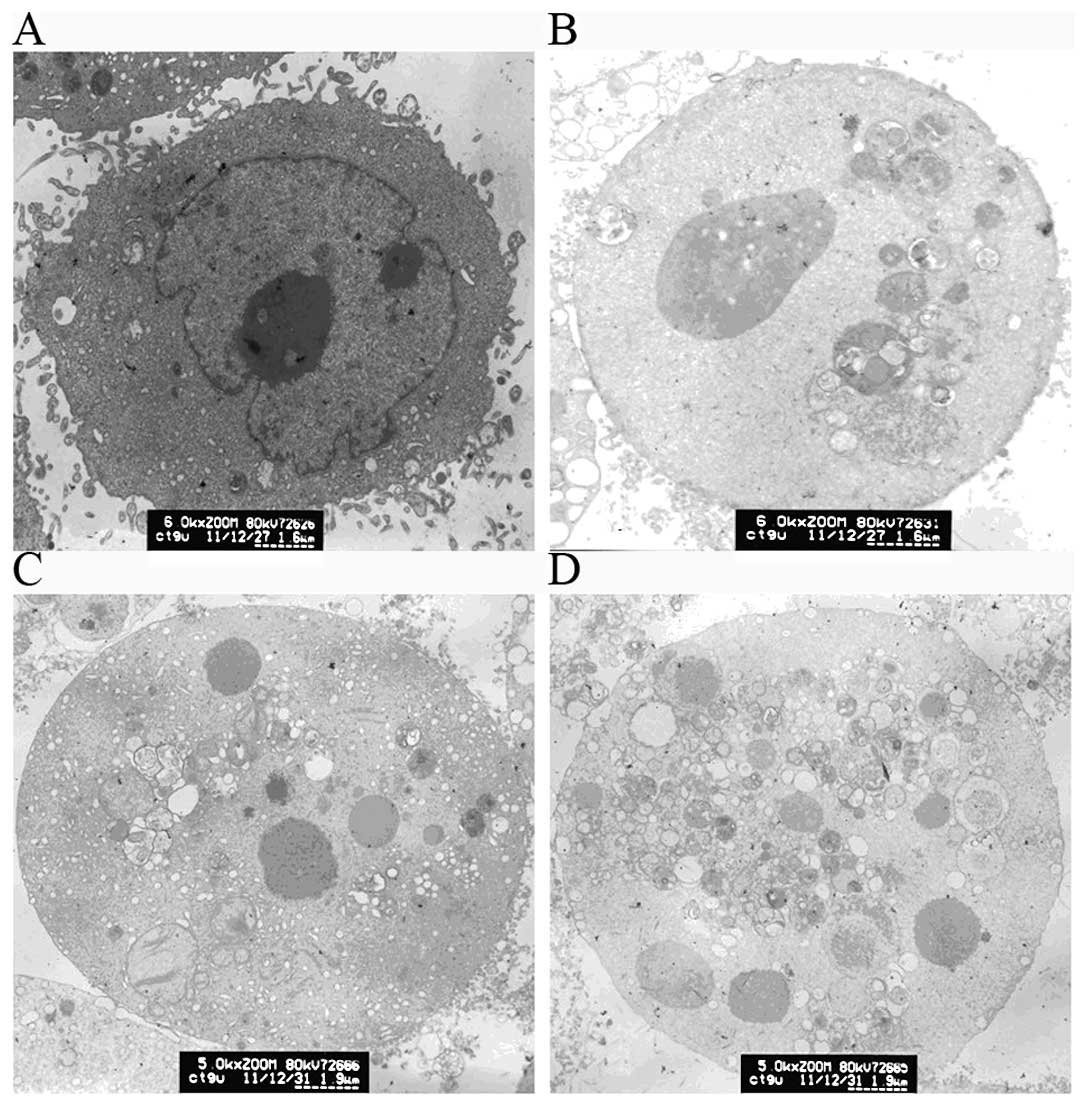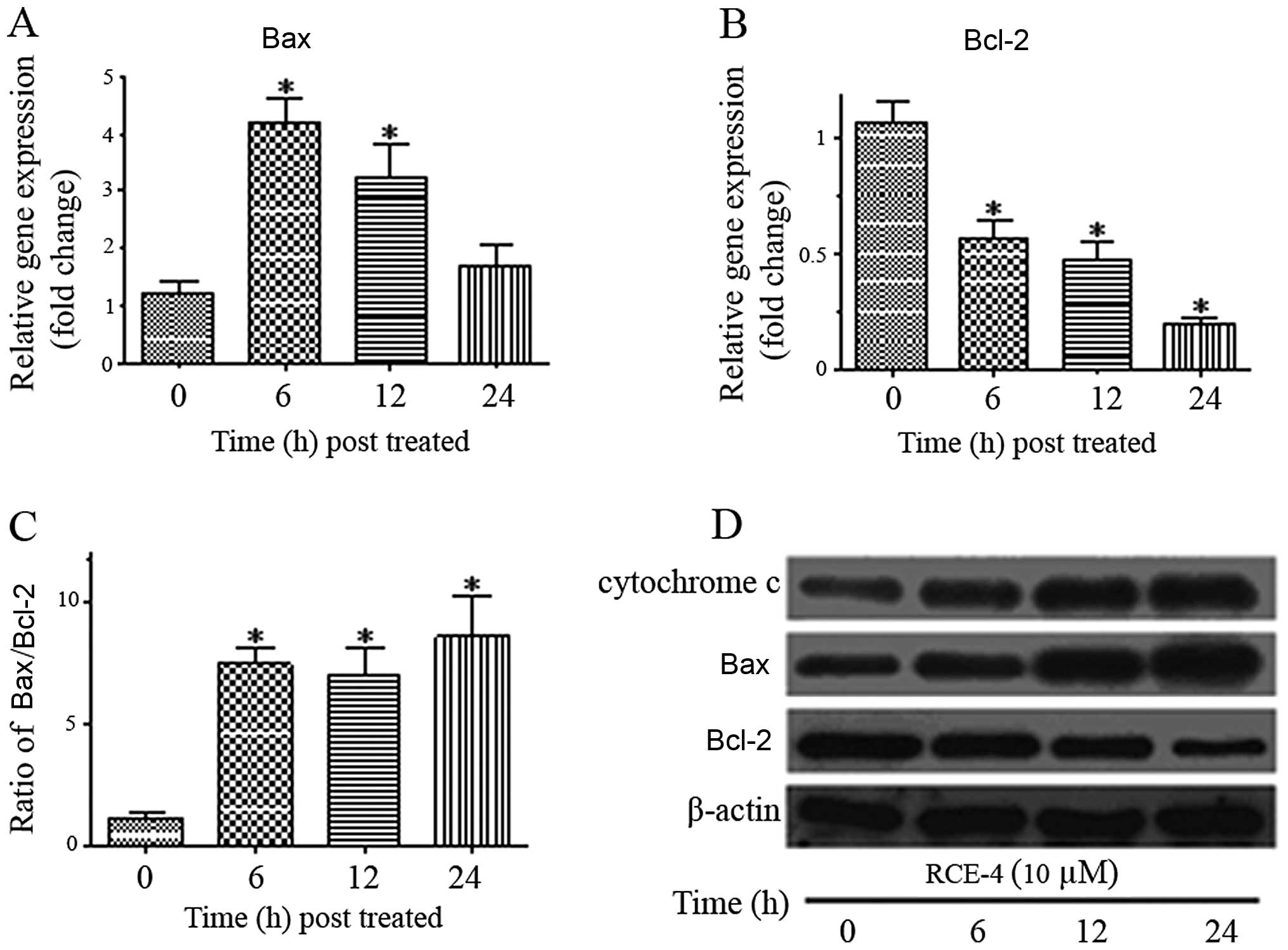|
1
|
Novotny L, Rauko P, Kombian SB and
Edafiogho IO: Selenium as a chemoprotective anti-cancer agent:
reality or wishful thinking? Neoplasma. 57:383–391. 2010.
View Article : Google Scholar : PubMed/NCBI
|
|
2
|
Fabregat I, Roncero C and Fernandez M:
Survival and apoptosis: a dysregulated balance in liver cancer.
Liver Int. 27:155–162. 2007. View Article : Google Scholar : PubMed/NCBI
|
|
3
|
Brown JM and Attardi LD: The role of
apoptosis in cancer development and treatment response. Nat Rev
Cancer. 5:231–237. 2005.PubMed/NCBI
|
|
4
|
Fesik SW: Promoting apoptosis as a
strategy for cancer drug discovery. Nat Rev Cancer. 5:876–885.
2005. View
Article : Google Scholar : PubMed/NCBI
|
|
5
|
von Schwarzenberg K and Vollmar AM:
Targeting apoptosis pathways by natural compounds in cancer: marine
compounds as lead structures and chemical tools for cancer therapy.
Cancer Lett. Jul 29–2010.(Epub ahead of print).
|
|
6
|
Ghobrial IM, Witzig TE and Adjei AA:
Targeting apoptosis pathways in cancer therapy. CA Cancer J Clin.
55:178–194. 2005. View Article : Google Scholar : PubMed/NCBI
|
|
7
|
Hoye AT, Davoren JE, Wipf P, Fink MP and
Kagan VE: Targeting mitochondria. Acc Chem Res. 41:87–97. 2008.
View Article : Google Scholar
|
|
8
|
Guclu-Ustundag O and Mazza G: Saponins:
properties, applications and processing. Crit Rev Food Sci Nutr.
47:231–258. 2007. View Article : Google Scholar : PubMed/NCBI
|
|
9
|
Nomura T, Uehara Y, Kawajiri H, Ryoyama K,
Yamori T and Fuke Y: Alkyl isothiocyanates suppress epidermal
growth factor receptor kinase activity but augment tyrosine kinase
activity. Cancer Epidemiol. 33:288–292. 2009. View Article : Google Scholar
|
|
10
|
McChesney J, Venkataraman S and Henri J:
Plant natural products: Back to the future or into extinction?
Phytochemistry. 68:2015–2022. 2007. View Article : Google Scholar : PubMed/NCBI
|
|
11
|
Xu H and Du J: The use and application of
Reineckia carnea in folk medicine. J Med Phar Chin Minor.
12:43–44. 2006.(In Chinese).
|
|
12
|
Zhang Y, Du J and Qiu DW: Overview of the
research of Miao drug Reineckia carnea. J Guiyang Coll
Tradit Chin Med. 11:2052003.(In Chinese).
|
|
13
|
Kanmoto T, Mimaki Y, Sashida Y, Nikaido T,
Koike K and Ohmoto T: Steroidal constituents from the underground
parts of Reineckea carnea and their inhibitory activity on
cAMP phosphodiesterase. Chem Pharm Bull (Tokyo). 42:926–931. 1994.
View Article : Google Scholar : PubMed/NCBI
|
|
14
|
Wang Q, Hou Q, Guo Z, et al: Three new
steroidal glycosides from roots of Reineckia carnea. Nat
Prod Res. Feb 3–2012.(Epub ahead of print).
|
|
15
|
Zhang ZQ, Chen JC, Yan J and Qiu MH: Three
steroids with unique structural feature of
5beta-Spirostan-1beta,3beta,17alpha-trihydroxyl from Reineckia
carnea. Chem Pharm Bull (Tokyo). 59:53–56. 2011. View Article : Google Scholar : PubMed/NCBI
|
|
16
|
Miyahara K: Co-occurrence and
high-performance liquid chromatographic separation of the
glycosides of rhodeasapogenin and its analogs which differ in the
F-ring structure. Chem Pharm Bull (Tokyo). 31:348–351. 1983.
View Article : Google Scholar
|
|
17
|
Jakubikova J and Sedlak J: Garlic-derived
organosulfides induce cytotoxicity, apoptosis, cell cycle arrest
and oxidative stress in human colon carcinoma cell lines.
Neoplasma. 53:191–199. 2006.PubMed/NCBI
|
|
18
|
Salvioli S, Ardizzoni A, Franceschi C and
Cossarizza A: JC-1, but not DiOC6(3) or rhodamine 123, is a
reliable fluorescent probe to assess delta psi changes in intact
cells: implications for studies on mitochondrial functionality
during apoptosis. FEBS Lett. 411:77–82. 1997. View Article : Google Scholar
|
|
19
|
Hengartner MO: The biochemistry of
apoptosis. Nature. 407:770–776. 2000. View
Article : Google Scholar : PubMed/NCBI
|
|
20
|
Kaufmann SH and Hengartner MO: Programmed
cell death: alive and well in the new millennium. Trends Cell Biol.
11:526–534. 2001. View Article : Google Scholar : PubMed/NCBI
|
|
21
|
Lowe SW and Lin AW: Apoptosis in cancer.
Carcinogenesis. 21:485–495. 2000. View Article : Google Scholar
|
|
22
|
Elmore S: Apoptosis: a review of
programmed cell death. Toxicol Pathol. 35:495–516. 2007. View Article : Google Scholar : PubMed/NCBI
|
|
23
|
Edinger AL and Thompson CB: Death by
design: apoptosis, necrosis and autophagy. Curr Opin Cell Biol.
16:663–669. 2004. View Article : Google Scholar : PubMed/NCBI
|
|
24
|
Chipuk JE, Bouchier-Hayes L and Green DR:
Mitochondrial outer membrane permeabilization during apoptosis: the
innocent bystander scenario. Cell Death Differ. 13:1396–1402. 2006.
View Article : Google Scholar : PubMed/NCBI
|
|
25
|
Suen DF, Norris KL and Youle RJ:
Mitochondrial dynamics and apoptosis. Genes Dev. 22:1577–1590.
2008. View Article : Google Scholar : PubMed/NCBI
|
|
26
|
Sharpe JC, Arnoult D and Youle RJ: Control
of mitochondrial permeability by Bcl-2 family members. Biochim
Biophys Acta. 1644:107–113. 2004. View Article : Google Scholar : PubMed/NCBI
|
|
27
|
Chang J, Hsu Y, Kuo P, Kuo Y, Chiang L and
Lin C: Increase of Bax/Bcl-XL ratio and arrest of cell cycle by
luteolin in immortalized human hepatoma cell line. Life Sci.
76:1883–1893. 2005. View Article : Google Scholar : PubMed/NCBI
|
|
28
|
Adams JM and Cory S: The Bcl-2 apoptotic
switch in cancer development and therapy. Oncogene. 26:1324–1337.
2007. View Article : Google Scholar : PubMed/NCBI
|















